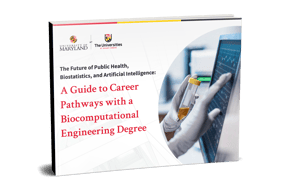The COVID-19 pandemic has changed daily life for virtually everyone around the world. More than nine months since the World Health Organization (WHO) first issued a report on a cluster of mysterious pneumonia cases in Wuhan, China, the race for a vaccine continues. While a handful of biopharmaceutical companies inch closer to bringing a vaccine to market, WHO Director General Tedros Adhanom recently cautioned that there might never be a “silver bullet” to tackle the disease.
For many outside the realm of pharmaceutics, the pandemic has shed new light on the rigorous - and, typically, slow - process to bring vaccines, therapeutics and drugs to market.
A New Approach to Vaccine Development
As outlined by the U.S. Food and Drug Administration (FDA) and the U.S. Centers for Disease Control (CDC), the vaccine development process and the drug development process involve similar regulatory steps ranging from an exploratory or discovery stage to a quality control or post-market safety monitoring stage. But, for the researchers hard at work on the ground, what exactly do these processes look like? What areas of expertise are needed and applied to determine what drugs or vaccines could work and at what dosage?
For years, researchers specializing in areas such as biochemistry, pharmaceutical sciences, cellular biology, and bioengineering have logged long hours running tests in labs in search of the next revolutionary discovery in therapeutics. Their aim is to find new treatments for cancers, autoimmune diseases, infectious diseases and countless other challenges that impact millions of lives around the world and cost trillions of dollars in global health spending.
But, the journey to bring new vaccines and drugs to market is no longer largely confined to the wet lab. Today, the process often involves scientists whose expertise - at first glance - seems to align more closely with computer engineering than biology.
Enter: biocomputational engineers.
Combining Data Science and Biology for Drug Research
“Multiple biotechnology areas in the job market currently have growing demand for biocomputational engineering graduates,” said Lan Ma, an electrical engineer by training, and the assistant director of the University of Maryland’s newly launched biocomputational engineering program.
“For instance, there is an increasing demand for biocomputational engineers in R&D for drug discovery, where predictive computational biomodeling is used to aid and lower the cost of the drug design process. More and more, data scientists are needed at medical and hospital clinics, private or hospital diagnostic laboratories, and in bioengineering companies. Such a growing demand for biocomputational jobs is due to the progressing success in using quantitative tools to efficiently solve non-intuitive and, oftentimes, highly complicated biological and health care problems.”
Ma herself entered the field by way of systems engineering and computational biology, with a focus on cell biology.
As a graduate student, Ma’s Ph.D. advisor pulled out a whiteboard and showed her some mathematical equations that could be used to formulate and compute the behavior of a cell.
“That was the first ‘Wow’ moment that intrigued me about what computation could do for biology - something I had never realized before,” Ma said. “Although I got my bachelor's degree in control engineering, I had always been interested in biology and physiology since middle school. I was excited about the opportunity to investigate interesting cell biology problems, and started delving into the Ph.D. training in the direction of bioengineering.”
The Degree for the Biotech Industry — Preparing Future Pioneers
During her training, Ma focused her research on the development of engineering and computational tools to study an important cellular process called chemotaxis. This process involves a cell’s ability to sense the direction of external chemical sources and respond by migrating either toward chemoattractants or away from chemorepellants.
“Specifically, I quantified the spatial intracellular response during chemotaxis for the first time by developing image processing tools,” Ma said. “I further established a mechanistic model to understand the cellular signaling pathway of chemotaxis. In addition, I developed a method of quantifying robustness of an oscillatory chemotaxis model using robust control theory. This computational work allowed us to make a key advancement in the understanding of cellular response to environmental cues during pathologic conditions such as inflammation and immune responses. As such, my Ph.D. study marked the transition period in which I not only switched to bioengineering, but I started to truly appreciate the power and potential of the computational approach in revolutionizing modern biotechnology.”
In this way, Ma can relate to the inaugural class of rising junior and senior biocomputational engineering students.
“In terms of curriculum, the biocomputational engineering program mostly emphasizes computational and programming skills utilized in current biotechnology, based on the disciplines of applied math, computer science and engineering,” Ma said. “The junior and senior courses of the standard bioengineering program, in contrast, introduce general background knowledge at the intersection of biology and engineering, which are not necessarily computationally heavy. As a result, biocomputational engineering graduates are well positioned for jobs in quantitative areas such as the computational biology industry, bioinformatics and health care data analytics, in particular.”
The Clark School will begin accepting transfer applications in January 2021 for Fall 2021 enrollment in the BCE degree program.





